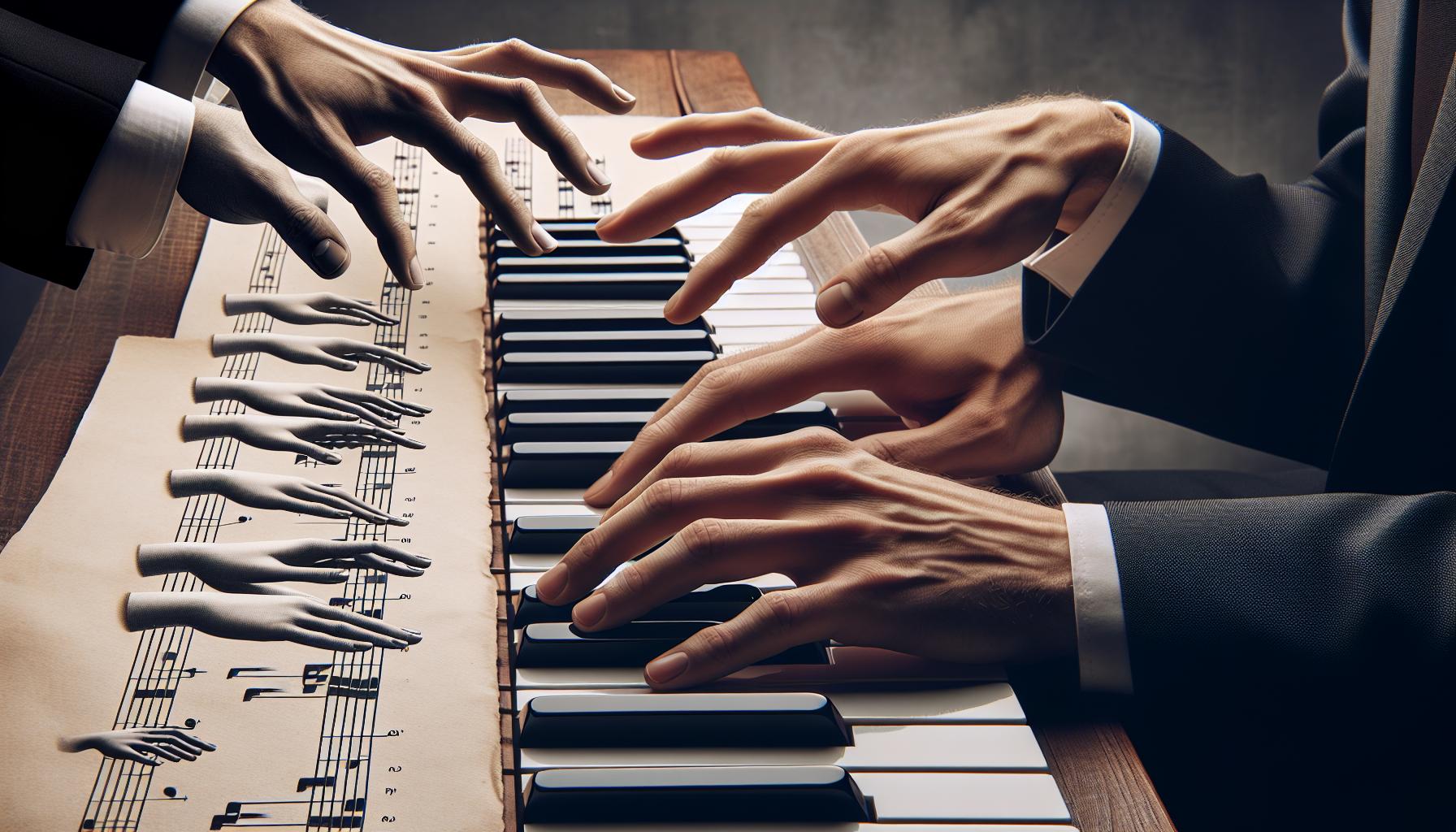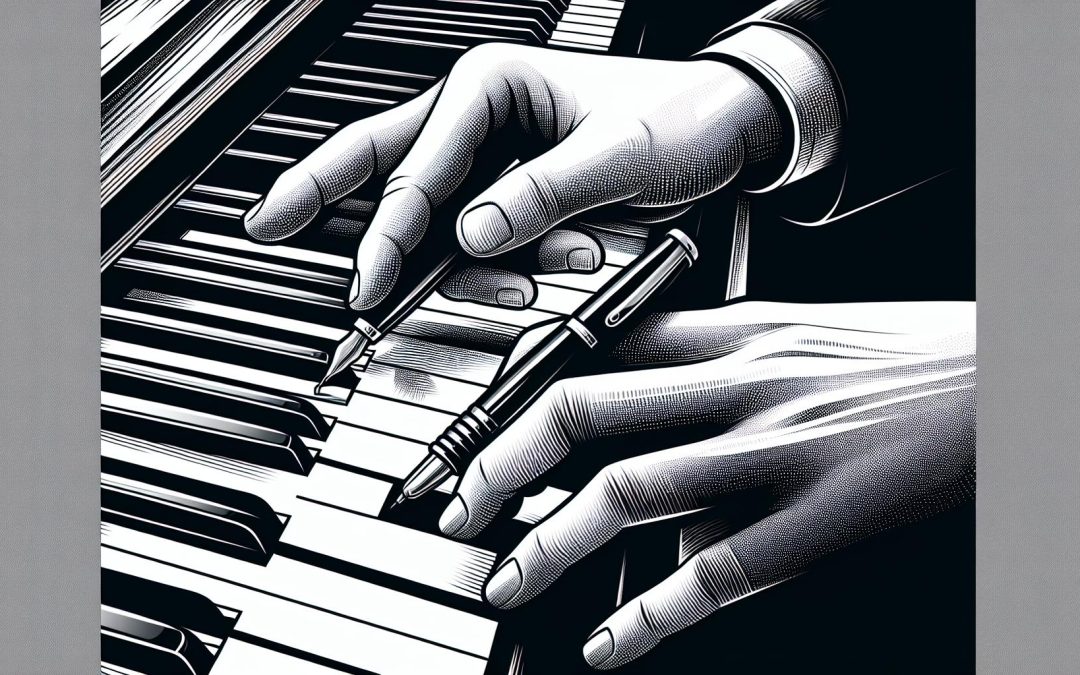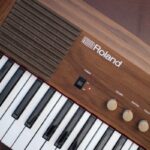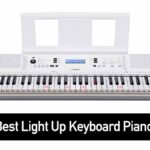Finding your way around a piano keyboard can feel like navigating a maze, especially for beginners. Those 88 keys, with their black and white patterns, might seem daunting at first glance. But don't worry, there's a method to the madness. Learning to quickly identify notes on the piano is a crucial skill, and it's easier than you might think.
With a few simple tips and tricks, anyone can become a pro at finding their way around the keyboard. Whether you're just starting your musical journey or looking to brush up on your skills, mastering note identification can make playing the piano more enjoyable and less intimidating. Let's dive into some straightforward strategies that'll have you hitting the right notes in no time.
Understanding the Piano Keyboard Layout
The key to quickly identifying notes on the piano lies in understanding its layout. A standard piano keyboard consists of 88 keys, with a pattern that repeats every 12 keys: seven white keys and five black keys. This pattern represents the musical notes that are the building blocks of most music.
The White Keys
The white keys on the piano are known for representing the natural notes. They are called natural because they are not sharp (#) or flat (b). Starting from the left, the first white key is an A. This pattern (A to G) repeats across the entire keyboard. To spot these notes faster, learners should look for the groupings of black keys. The white key immediately to the left of any group of two black keys is a C, a crucial anchor point for finding other notes.
The Black Keys
The black keys on a piano come in groups of two and three, and they denote the sharp and flat notes. A sharp (#) raises a note by a half step, while a flat (b) lowers it by the same amount. For example, the black key to the right of a C is C sharp (C#), or if approached from the other direction (to the left of a D), it's D flat (Db). These dual names can seem confusing at first, but they are fundamental in understanding how notes relate to one another.
A Visual Pattern to Remember
One trick to remembering the layout is to visualize the keyboard in sections based on the repeating pattern of black keys. By recognizing these patterns, one can quickly deduce the surrounding white keys.
Navigating with Chords and Scales
Learning basic chords and scales can also aid in navigating the keyboard more fluently. When someone learns how a C major chord is positioned, for instance, they're not just learning three notes. They're also learning how those notes look and feel under the fingers, which can then be transposed to other keys.
Practice Makes Perfect
Finally, regular practice is essential. The more one interacts with the keyboard, the quicker they'll become at identifying notes. Basic drills, such as naming notes aloud while playing them, can be surprisingly effective. It's not just about muscle memory, but also about visual and auditory recognition coming together to create a more intuitive understanding of the keyboard's layout.
Memorizing the Note Names

Once pianists grasp the basic layout of the piano keyboard, the next crucial step in their musical journey involves memorizing the note names. This might seem daunting at first, but there are effective strategies that can simplify the process.
The first tactic involves grouping the keys. Pianists should note that every group of two black keys is flanked by the notes C, D, and E, while groups of three black keys are surrounded by F, G, A, and B. Visualizing these groups helps in quickly identifying the surrounding white keys. This method not only speeds up note recognition but also aids in understanding the overall structure of music.
Flashcards can be another invaluable tool for memorization. They can be used in a variety of ways, starting with identifying single notes and gradually moving on to chords and scales. The repetitive nature of flashcard practice makes it easier to commit the notes to memory over time.
Using mnemonic devices is also highly recommended. For the white keys, phrases like "Every Good Boy Does Fine" for the notes on the lines of the treble clef, and "FACE" for the spaces, make remembering the note names more manageable. Similar mnemonics can be created for the bass clef and the black keys as well.
The role of technology shouldn't be overlooked. Numerous apps and online games are designed specifically to help students learn and memorize piano notes in a fun and interactive way. These digital tools often provide instant feedback, which is crucial for correcting mistakes and reinforcing learning.
Engaging in regular practice sessions is indispensable for memorization. Short, focused practice periods can be more effective than longer, less frequent ones. During these sessions, pianists should challenge themselves to play scales and simple songs from memory, gradually increasing the complexity as their confidence grows.
Pianists might find it helpful to label the keys with their corresponding notes. While some might hesitate to mark their piano, temporary solutions like removable stickers or even placing a chart above the keyboard can provide visual cues without causing any damage. This strategy is particularly useful for beginners, helping them to overcome initial hurdles in note identification.
It's important to remember that memorizing note names is just the beginning. Truly mastering the piano involves understanding the relationships between these notes, such as intervals, chords, and scales. This deeper level of knowledge enables pianists to move beyond mere memorization and towards a more intuitive understanding of music.
Using Mnemonics for Quick Recall

When learning how to identify notes on the piano keyboard, using mnemonic devices can be a game-changer. Mnemonics are memory aids that help in retaining and recalling information quickly and efficiently. They work by associating easy-to-remember words, phrases, or sentences with the information one is trying to learn. For piano notes, mnemonic devices can be especially useful for beginners who may find the array of keys daunting.
One of the most popular methods for memorizing the note names of the white keys is by using sentences. For example, the notes E, G, B, D, and F – which correspond to the line notes on a treble clef staff – can be remembered through the phrase "Every Good Boy Does Fine." Similarly, the space notes F, A, C, and E spell out the word "FACE," making it a straightforward mnemonic to recall.
The bass clef, which can often seem more challenging for beginners, also has its own sets of mnemonics. The line notes G, B, D, F, and A can be memorized with the phrase "Good Boys Do Fine Always," while the space notes A, C, E, and G can be remembered with "All Cows Eat Grass." These simple phrases make it easier to navigate the lower half of the keyboard without getting tangled in a web of note names.
For the black keys, which consist of sharp and flat notes depending on the music context, creative mnemonics can also come into play. Some learners find it helpful to think of these keys in groups of twos and threes, creating associative names or stories that help them remember which is which. For instance, the two black keys can be thought of as a "dog house" for D and G, while the three black keys form a "cat house" for C, F, and G flats.
Incorporating mnemonics into daily practice sessions can significantly enhance one's ability to find notes on the keyboard quickly. It's a tool that makes the note-naming process not just educational but also entertaining. Learners are encouraged to come up with their own mnemonics that resonate with them personally. This creative process not only aids in memorization but also makes the learning journey more enjoyable.
Practicing with Flashcards and Apps

While mnemonic devices offer a strong foundation for remembering notes, combining them with practical tools such as flashcards and apps can significantly speed up the learning process. Flashcards have been a staple in education for a reason: they're effective. When it comes to piano practice, they turn memorization into an engaging activity rather than a tedious chore. On one side of a flashcard, a note is displayed on the musical staff; on the opposite side, the note name and its position on the keyboard. This setup encourages active recall, a process where the learner mentally retrieves information, greatly enhancing memory consolidation.
In today’s digital age, various apps make learning note names even more accessible and fun. These applications range from simple note identification games to comprehensive piano teaching platforms that incorporate lessons on reading music, timing, and even playing with both hands. What makes apps particularly appealing is their interactive nature. Many offer immediate feedback, scores, and levels to achieve, which can motivate learners to set and reach goals in their practice sessions.
Here’s a quick rundown of the benefits each approach offers:
-
Flashcards:
- Encourage active recall
- Can be customized or found pre-made
- Portable and accessible anytime, anywhere
- Support focused, quick study sessions
- Provide interactive learning experiences
- Offer immediate feedback to correct mistakes
- Include gamification elements to boost motivation
- Can track progress over time
Blending the tactile experience of flashcards with the interactive features of apps creates a well-rounded practice routine. For those who prefer technology, apps might be the go-to choice; however, it’s worth incorporating flashcard sessions to vary the study mode, which can help fight off boredom and enhance memory through different types of engagement.
Moreover, many apps now incorporate mnemonic devices directly into their interface, making it easier for students to connect the dots between the mnemonic phrases they’ve learned and the notes they’re playing. This synergy between traditional mnemonic methods and modern technological tools represents the evolution of music education, offering learners the best of both worlds.
To make the most out of these tools, one should consider setting aside specific times for flashcard sessions and app usage. Short, consistent practice times are often more effective than long, irregular sessions. Additionally, setting small, achievable goals for each practice session can help create a sense of progress and accomplishment.
Improving Note Recognition Speed

In the journey to become proficient at finding notes on the piano keyboard, speed is of the essence. It’s not just about knowing the notes but being able to recognize them swiftly. This allows for smoother transitions and a more fluid playing experience. Achieving quick note recognition requires a mix of strategies, including regular practice, utilizing technology, and applying mnemonic devices.
Practice Makes Perfect
The adage “practice makes perfect” holds especially true when it comes to mastering the piano. However, it's important to practice smartly. Breaking down practice sessions into focused segments dedicated to note recognition can significantly improve speed. Incorporating daily exercises that involve identifying and playing notes without looking at the keys encourages muscle memory, making note recognition almost automatic over time. Strategies such as:
- Playing scales and arpeggios
- Randomly selecting notes to find and play
- Using flashcards to quiz note names
can drastically reduce the time it takes to find notes on the keyboard.
Leverage Technology
Technology offers a plethora of tools that can aid in learning notes more quickly. Apps designed for music education often include games and exercises specifically aimed at improving note recognition speed. These apps provide immediate feedback, allowing learners to correct mistakes in real-time. They also introduce gamification into practice, making the process more engaging and enjoyable. Some notable features include:
- Interactive note-finding games
- Timed challenges
- Progress tracking
Incorporating these tools into daily practice routines can take note recognition skills to the next level.
Mnemonics and Visualization
Mnemonics are a powerful way to improve memory recall. By associating notes with visual cues or phrases, learners can more easily remember their locations on the keyboard. For example, memorizing that the notes of the C Major chord spell out “Every Good Boy Deserves Fudge” can make it quicker to find these notes. Visualization techniques, such as imagining the keyboard layout and visualizing where each note falls, enhance this further. Engaging with the piano in a visual-spatial manner boosts memorization and recognition speed.
Conclusion
Mastering the art of quick note recognition on the piano doesn't have to be daunting. By integrating smart practice techniques like playing scales, using flashcards, and applying mnemonic devices, pianists can significantly enhance their playing experience. The power of technology, through music education apps, offers an engaging way to practice with interactive games and immediate feedback, making learning both fun and effective. Remember, leveraging mnemonics and visualization not only aids in faster note recognition but also in overall musical proficiency. So, dive into these strategies and watch your piano skills soar to new heights.
Harlan Kilstein began playing piano during covid with no piano background at all. He taught himself how to play learning what to do and what not to do.
Today he's an advanced intermediate player and can help you grow in your skills because he learned all this on his own.








